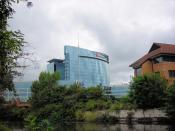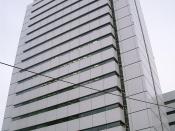The human resources department is in charge of a variety of activities but its most important function is figuring out the staffing needs of their company. In most cases, these needs require the hiring of new employees. Sometimes this process can take a very long time causing the company to lose money. GlaxoSmithKline, a pharmaceutical giant in Philadelphia, was in this position until its HR executives turned to a technology known as workforce analytics. Arthur J. Gallagher & Co, a large insurance brokerage firm, also turned to workforce analytics. However, this company used this application for a different reason.
At GlaxoSmithKline, workforce analytics became a very important part of its human resources department especially after realizing that the company wasn't gathering data quickly enough. GSK spent a great amount of time into collecting data about the recruiting environment but not enough time to actually interpret it and analyze it. By implementing workforce analytics, the HR executives at GSK had a better understanding of what the data meant and what actions to take.
The data found through the usage of workforce analytics played an especially important role in the process of recruiting employees. According to Lou Manzi, vice president of global recruitment, the process for finding a job candidate would take about a month. However, by analyzing the date via workforce analytics, the HR department discovered that the whole process actually took double the amount of time. The cause of this wasn't because the recruiters weren't working fast enough; it was because the process was very slow and lacked the use of some sort of technology. The slow pace of the process also cost GSK some money. By using workforce analytics, the recruiters at GSK were able to speed up the process of hiring an individual and also save money.
At GSK, workforce analytics doesn't just cut down the time that it takes to hire a new employee but more importantly, it anticipates when this needs to happen. With the data that is gathered, HR executives can see if there will be job-openings in the near future. By the time that certain jobs open up, HR recruiters may possibly already have candidates lined up to fill those positions thanks to workforce analytics. Instead of relying on intuition, GSK now relies on data which is much more precise and beneficial for the company.Workforce analytics provides GSK with a strategic advantage over other companies because they can get to potential employees faster. This type of technology, as already mentioned, speeds up the hiring process by finding job candidates more quickly. The companies that don't use workforce analytics will be at a disadvantage because they could possibly be losing great employees to companies such as GSK.
Another company that uses workforce analytics is Arthur J. Gallagher & Co. The application used at this company is called IBM Cognos 8 Workforce Performance. With this application, any person from the HR department can investigate the demographic workforce distribution without having to go to an IT or an analyst for help which ultimately makes the HR department much more self-sufficient. Workforce analytics hasn't just helped the two companies mentioned above but also many more. This application helps companies gain insights into business processes in innovative fashions but most importantly, it helps HR departments move beyond simple spreadsheets and reporting.
Works CitedStarner, Tom. "Making Their Numbers." 2 October 2008. Human Resources Executive Online. 4 March 2009 .


